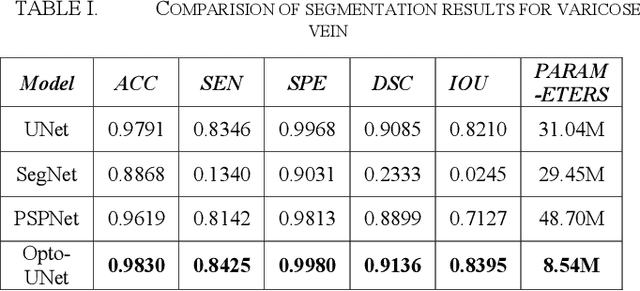Violeta Madjarova
WAVE-UNET: Wavelength based Image Reconstruction method using attention UNET for OCT images
Oct 05, 2024Abstract:In this work, we propose to leverage a deep-learning (DL) based reconstruction framework for high quality Swept-Source Optical Coherence Tomography (SS-OCT) images, by incorporating wavelength ({\lambda}) space interferometric fringes. Generally, the SS-OCT captured fringe is linear in wavelength space and if Inverse Discrete Fourier Transform (IDFT) is applied to extract depth-resolved spectral information, the resultant images are blurred due to the broadened Point Spread Function (PSF). Thus, the recorded wavelength space fringe is to be scaled to uniform grid in wavenumber (k) space using k-linearization and calibration involving interpolations which may result in loss of information along with increased system complexity. Another challenge in OCT is the speckle noise, inherent in the low coherence interferometry-based systems. Hence, we propose a systematic design methodology WAVE-UNET to reconstruct the high-quality OCT images directly from the {\lambda}-space to reduce the complexity. The novel design paradigm surpasses the linearization procedures and uses DL to enhance the realism and quality of raw {\lambda}-space scans. This framework uses modified UNET having attention gating and residual connections, with IDFT processed {\lambda}-space fringes as the input. The method consistently outperforms the traditional OCT system by generating good-quality B-scans with highly reduced time-complexity.
Denoising OCT Images Using Steered Mixture of Experts with Multi-Model Inference
Feb 24, 2024Abstract:In Optical Coherence Tomography (OCT), speckle noise significantly hampers image quality, affecting diagnostic accuracy. Current methods, including traditional filtering and deep learning techniques, have limitations in noise reduction and detail preservation. Addressing these challenges, this study introduces a novel denoising algorithm, Block-Matching Steered-Mixture of Experts with Multi-Model Inference and Autoencoder (BM-SMoE-AE). This method combines block-matched implementation of the SMoE algorithm with an enhanced autoencoder architecture, offering efficient speckle noise reduction while retaining critical image details. Our method stands out by providing improved edge definition and reduced processing time. Comparative analysis with existing denoising techniques demonstrates the superior performance of BM-SMoE-AE in maintaining image integrity and enhancing OCT image usability for medical diagnostics.
Modified watershed approach for segmentation of complex optical coherence tomographic images
Mar 29, 2023Abstract:Watershed segmentation method has been used in various applications. But many a times, due to its over-segmentation attributes, it underperforms in several tasks where noise is a dominant source. In this study, Optical Coherence Tomography images have been acquired, and segmentation has been performed to analyse the different regions of fluid filled sacs in a lemon. A modified watershed algorithm has been proposed which gives promising results for segmentation of internal lemon structures.
Opto-UNet: Optimized UNet for Segmentation of Varicose Veins in Optical Coherence Tomography
Mar 20, 2023



Abstract:Human veins are important for carrying the blood from the body-parts to the heart. The improper functioning of the human veins may arise from several venous diseases. Varicose vein is one such disease wherein back flow of blood can occur, often resulting in increased venous pressure or restricted blood flow due to changes in the structure of vein. To examine the functional characteristics of the varicose vein, it is crucial to study the physical and bio mechanical properties of the vein. This work proposes a segmentation model Opto-UNet, for segmenting the venous wall structure. Optical Coherence Tomography system is used to acquire images of varicose vein. As the extracted vein is not uniform in shape, hence adequate method of segmentation is required to segment the venous wall. Opto-UNet model is based on the U-Net architecture wherein a new block is integrated into the architecture, employing atrous and separable convolution to extract spatially wide-range and separable features maps for attaining advanced performance. Furthermore, the depth wise separable convolution significantly reduces the complexity of the network by optimizing the number of parameters. The model achieves accuracy of 0.9830, sensitivity of 0.8425 and specificity of 0.9980 using 8.54 million number of parameters. These results indicate that model is highly adequate in segmenting the varicose vein wall without deteriorating the segmentation quality along with reduced complexity
Deep Learning based Segmentation of Optical Coherence Tomographic Images of Human Saphenous Varicose Vein
Mar 02, 2023Abstract:Deep-learning based segmentation model is proposed for Optical Coherence Tomography images of human varicose vein based on the U-Net model employing atrous convolution with residual blocks, which gives an accuracy of 0.9932.
 Add to Chrome
Add to Chrome Add to Firefox
Add to Firefox Add to Edge
Add to Edge